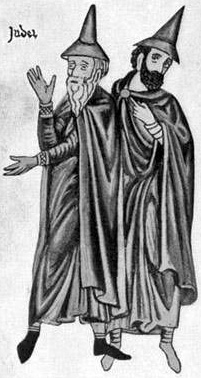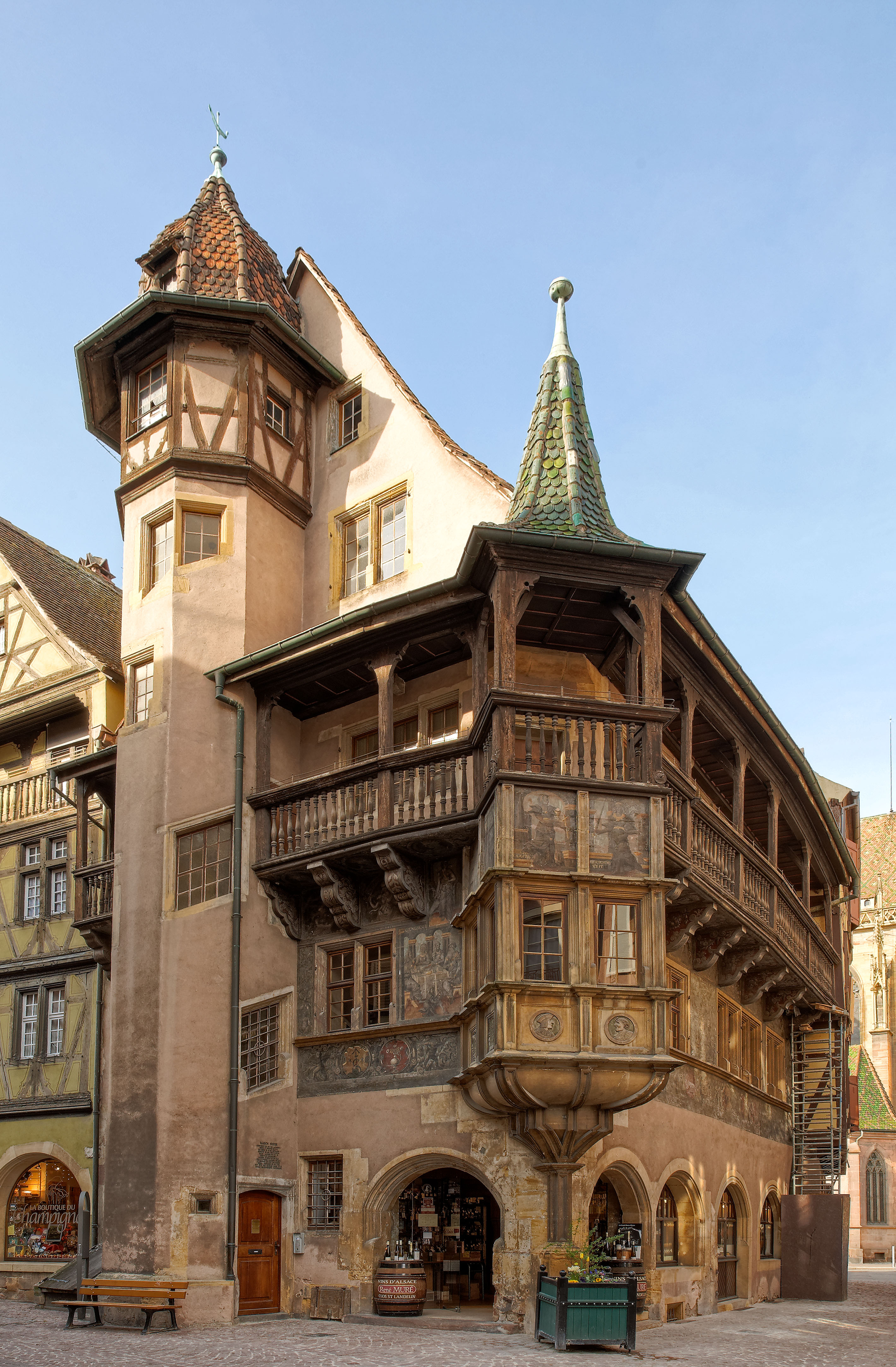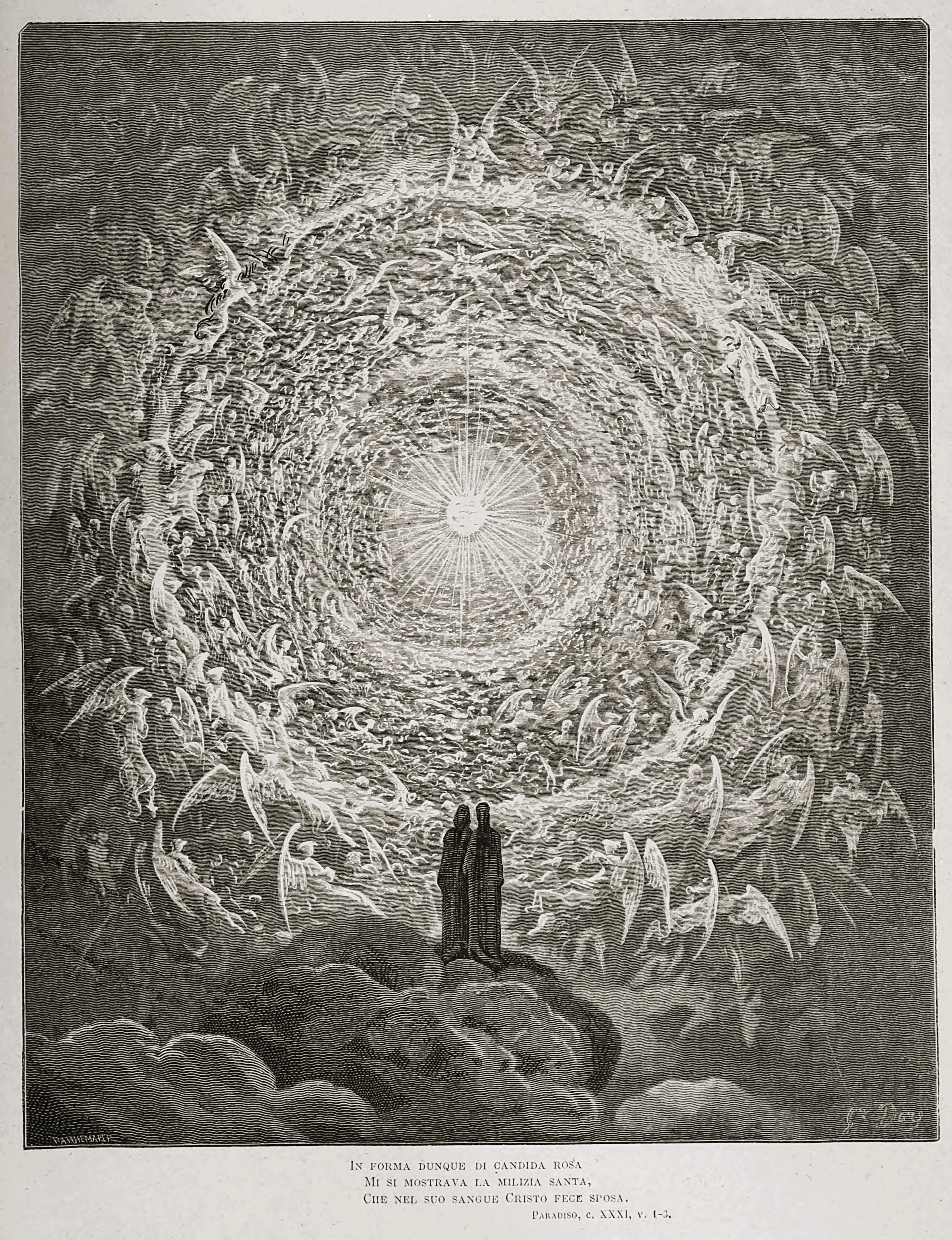|
Rintfleisch Massacres
The Rintfleisch or Rindfleisch movement was a series of massacres against Jews in 1298. The event, in later terminology a pogrom, was the first large-scale persecution in Germany since the First Crusade. History It occurred in the Franconian region during the civil strife between the elected King of the Romans, Count Adolf of Nassau, and his Habsburg rival Duke Albert of Austria, when Imperial authority, traditionally concerned with the protection of the Jews, had temporarily collapsed. Already in 1287, the death of Werner of Oberwesel in the Rhineland had been blamed on Jews, and about 500 were killed in a violent outburst of random violence, followed by a series of blood libels. When King Adolf was finally deposed and killed in the Battle of Göllheim on 2 July 1298, the Franconian nobility gathered at Albert's election in Frankfurt. When at the same time the Jews in the Hohenlohe town of Röttingen were accused of having obtained and desecrated a consecrated host, one "L ... [...More Info...] [...Related Items...] OR: [Wikipedia] [Google] [Baidu] |
History Of The Jews In Germany
The history of the Jews in Germany goes back at least to the year 321 CE, and continued through the Early Middle Ages (5th to 10th centuries CE) and High Middle Ages (c. 1000–1299 CE) when Jewish immigrants founded the Ashkenazi Jewish community. The community survived under Charlemagne, but suffered during the Crusades. Accusations of well poisoning during the Black Death (1346–1353) led to mass slaughter of German Jews, while others fled in large numbers to Poland. The Jewish communities of the cities of Mainz, Speyer and Worms became the center of Jewish life during medieval times. "This was a golden age as area bishops protected the Jews, resulting in increased trade and prosperity." The First Crusade began an era of persecution of Jews in Germany. Entire communities, like those of Trier, Worms, Mainz and Cologne, were slaughtered. The Hussite Wars became the signal for renewed persecution of Jews. The end of the 15th century was a period of religious hatred that ascr ... [...More Info...] [...Related Items...] OR: [Wikipedia] [Google] [Baidu] |
Röttingen
Röttingen is a town in the district of Würzburg, in Bavaria, Germany. It is situated south of Würzburg, and east of Bad Mergentheim. Geography Climate The valley of Tauber is one of the driest areas in Bavaria and belongs to the continental, dry and warm type of climate with very little of rain. There are more than 30 days every year when the temperature is above 25 °C (77 °F) and fewer than 10 days every year where the temperature is below 0 °C (32 °F). Subdivisions The town is divided into the sections of Aufstetten, Röttingen, and Strüth. History The Alemannic tribe of the "Ruoter" (Ruotingen = Röttingen) probably settled first on this place in the late 5th century. The oldest documents in the town date back to 1103, and the town privilege was given in 1275. In 1298 the town was the scene of the Rintfleisch massacres, when a certain "Lord Rintfleisch", accusing the town's Jews of having obtained and desecrated a consecrated host, gathered a ... [...More Info...] [...Related Items...] OR: [Wikipedia] [Google] [Baidu] |
Forchheim
Forchheim () is a Town#Germany, town in Upper Franconia () in northern Bavaria, and also the seat of the administrative Forchheim (district), district of Forchheim. Forchheim is a former royal city, and is sometimes called the Gateway to the Franconian Switzerland, referring to the region of outstanding natural beauty to the north east of the town. Nowadays Forchheim is most famous for its ten day long beer and music festival (Annafest) which takes place in late July in an idyllic wooded hillside, home to 24 beer gardens, on the outskirts of the town. Forchheim's population, as of December 2013, was 30,705, and its land area is . Its position is 49° 44' N, 11° 04' E and its elevation is Above mean sea level, above sea level. Name and coat of arms When the coat of arms was bestowed upon the town at the beginning of the 13th century, people wrongly believed that their town's name, "Vorchheim" originates from the Old High German word ''vorhe'' (“trout”). This resulted in the ... [...More Info...] [...Related Items...] OR: [Wikipedia] [Google] [Baidu] |
Nördlingen
Nördlingen (; Swabian: ''Nearle'' or ''Nearleng'') is a town in the Donau-Ries district, in Swabia, Bavaria, Germany, with a population of approximately 20,674. It is located approximately east of Stuttgart, and northwest of Munich. It was built in an impact crater 15 million years old and in diameter—the Nördlinger Ries—of a meteorite which hit with an estimated speed of 70,000 km/h, and left the area riddled with an estimated 72,000 tons of micro-diamonds. Nördlingen was first mentioned in recorded history in 898. The town was the location of two battles during the Thirty Years' War, which took place between 1618 and 1648. Today it is one of very few towns in Germany that still have completely intact city walls—joining the ranks of Rothenburg ob der Tauber, Dinkelsbühl and Berching, all of them in Bavaria. Another attraction in the town is Saint George's Church's steeple, called "Daniel," which is made of a suevite impact breccia that contains shocked ... [...More Info...] [...Related Items...] OR: [Wikipedia] [Google] [Baidu] |
Dinkelsbühl
Dinkelsbühl () is a historic town in Central Franconia, a region of Germany that is now part of the state of Bavaria, in southern Germany. Dinkelsbühl is a former free imperial city of the Holy Roman Empire. In local government terms, Dinkelsbühl lies near the western edge of the (or local government district) of Ansbach, north of Aalen. Dinkelsbühl lies on the northern part of the Romantic Road, and is one of three particularly striking historic towns on the northern part of the route, the others being Rothenburg ob der Tauber and Nördlingen. These three, along with Berching, are today the only towns in Germany that still have completely intact city walls. All four are in Bavaria. The town lies on the southern edge of the Franconian Heights and on the River Wörnitz, which rises in the town of Schillingsfürst. The population in 2013 was 11,315. History Fortified by Emperor Henry V, in 1305 Dinkelsbühl received the same municipal rights as Ulm, and in 1351 was raised ... [...More Info...] [...Related Items...] OR: [Wikipedia] [Google] [Baidu] |
Bamberg
Bamberg (, , ; East Franconian German, East Franconian: ''Bambärch'') is a town in Upper Franconia district in Bavaria, Germany, on the river Regnitz close to its confluence with the river Main (river), Main. Bamberg had 79,000 inhabitants in 2022. The town dates back to the 9th century, when its name was derived from the nearby ' castle. Cited as one of Germany's most beautiful towns, with medieval streets and buildings, the old town of Bamberg with around 2,400 Timber framing, timber houses has been a UNESCO World Heritage Site since 1993. From the 10th century onwards, Bamberg became a key link with the West Slavs, Western Slavic peoples, notably those of Poland and Pomerania. It experienced a period of great prosperity from the 12th century onwards, during which time it was briefly the centre of the Holy Roman Empire. Holy Roman Emperor, Emperor Henry II, Holy Roman Emperor, Henry II was buried in the old town, alongside his wife Cunigunde of Luxemburg, Kunigunde. The town' ... [...More Info...] [...Related Items...] OR: [Wikipedia] [Google] [Baidu] |
Würzburg
Würzburg (; Main-Franconian: ) is, after Nuremberg and Fürth, the Franconia#Towns and cities, third-largest city in Franconia located in the north of Bavaria. Würzburg is the administrative seat of the Regierungsbezirk Lower Franconia. It spans the banks of the Main (river), Main river. Würzburg is situated approximately 110 km west-northwest of Nuremberg and 120 km east-southeast of Frankfurt, Frankfurt am Main. The population as of 2019 is approximately 130,000 residents. Würzburg is famous for its partly rebuilt and reconstructed old town and its Würzburger Residenz, a palace that is a List of World Heritage Sites in Germany, UNESCO World Heritage Site. The regional dialect is East Franconian German. History Early and medieval history A Bronze Age Europe, Bronze Age (Urnfield culture) refuge castle, the Celtic Segodunum, and later a Roman Empire, Roman fort, stood on the hill known as the Leistenberg, the site of the present Fortress Marienberg. The ... [...More Info...] [...Related Items...] OR: [Wikipedia] [Google] [Baidu] |
Rothenburg Ob Der Tauber
Rothenburg ob der Tauber () is a town located in the district of Ansbach (district), Ansbach of Mittelfranken (Middle Franconia), the Franconia region of Bavaria, Germany. It is well known for its well-preserved Middle Ages, medieval old town, a destination for tourists from around the world. It is part of the popular Romantic Road through southern Germany. Today it is one of only four towns in Germany that still have completely intact city walls, the other three being Nördlingen, Dinkelsbühl and Berching, all in Bavaria. Rothenburg was a free imperial city (German: Reichsstadt) from the late Middle Ages to 1803. In 1884 Johann Friedrich (von) Hessing (1838–1918) built ''Wildbad Rothenburg o.d.T.'' 1884–1903. Name The name "Rothenburg ob der Tauber" is German language, German for "Red castle above the Tauber", describing the town's location on a plateau overlooking the Tauber River. Rothenburg Castle, in close vicinity to the village and also called ''Alte Burg'' (old cas ... [...More Info...] [...Related Items...] OR: [Wikipedia] [Google] [Baidu] |
Colmar
Colmar (; ; or ) is a city and commune in the Haut-Rhin department and Alsace region of north-eastern France. The third-largest commune in Alsace (after Strasbourg and Mulhouse), it is the seat of the prefecture of the Haut-Rhin department and of the subprefecture of the Colmar-Ribeauvillé arrondissement. The city is renowned for its well-preserved old town, its numerous architectural landmarks and its museums, among which is the Unterlinden Museum, which houses the '' Isenheim Altarpiece''. Colmar is located on the Alsatian Wine Route and considers itself to be the capital of Alsatian wine ('). History Colmar was first mentioned by Charlemagne in his chronicle about Saxon wars. This was the location where the Carolingian Emperor Charles the Fat held a diet in 884. Colmar was granted the status of a free imperial city by Emperor Frederick II in 1226. In 1354 it joined the Décapole city league.G. Köbler, ''Historisches Lexikon der deutschen Länder'', 7th editi ... [...More Info...] [...Related Items...] OR: [Wikipedia] [Google] [Baidu] |
Heaven
Heaven, or the Heavens, is a common Religious cosmology, religious cosmological or supernatural place where beings such as deity, deities, angels, souls, saints, or Veneration of the dead, venerated ancestors are said to originate, be throne, enthroned, or reside. According to the beliefs of some religions, heavenly beings can descend to Earth or Incarnation, incarnate and earthly beings can ascend to Heaven in the afterlife or, in exceptional cases, enter Heaven Entering heaven alive, without dying. Heaven is often described as a "highest place", the Sacred, holiest place, a paradise, in contrast to Hell or the Underworld or the "low places" and History of Christian universalism, universally or conditionally accessible by earthly beings according to various standards of divinity, good and evil, goodness, piety, faith, or other virtues or orthodoxy, right beliefs or simply Will of God, divine will. Some believe in the possibility of a heaven on Earth in a ''world to come''. A ... [...More Info...] [...Related Items...] OR: [Wikipedia] [Google] [Baidu] |
Burned At The Stake
Death by burning is an list of execution methods, execution, murder, or suicide method involving combustion or exposure to extreme heat. It has a long history as a form of public capital punishment, and many societies have employed it as a punishment for and warning against crimes such as treason, heresy, and witchcraft. The best-known execution of this type is burning at the stake, where the condemned is bound to a large wooden stake and a fire lit beneath. A holocaust is a religious animal sacrifice that is completely consumed by fire, also known as a burnt offering. The word derives from the ancient Greek holokaustos, the form of sacrifice in which the victim was reduced to ash, as distinguished from an animal sacrifice that resulted in a communal meal. Effects In the process of being burned to death, a body experiences burns to tissue, changes in content and distribution of body fluid, fixation (histology), fixation of tissue, and shrinkage (especially of the skin). Intern ... [...More Info...] [...Related Items...] OR: [Wikipedia] [Google] [Baidu] |






